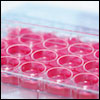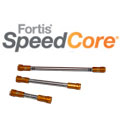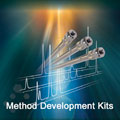|
|
|
20 November 2015 |

|
LCGC TV: Advancing Chromatographic Methods
Kate Rimmer of the National Institute of Standards and Technology (NIST) discusses separation science research carried out at NIST — on using 2D LC to quantitate polycyclic aromatic hydrocarbons, the challenges of identifying the best peak integration approach, and where 2D LC research is heading next. |
|
|
|
|
| |
|
| |

Photo Credit: Rafe Swan/Getty Images
|
Meeting Review: Advances in Bio-Separations: Biologics Characterization from Cradle to Grave (Day One)
The first of a two-part review of the Advances in Bio-Separations meeting, organized by The Chromatographic Society. Focusing on the characterization of biopharmaceutical molecules at AstraZeneca’s MedImmune site in Cambridge, UK, the programme covered the analysis of peptides, oligonucleotides, and monoclonal antibodies (mAbs), proposing multiple approaches towards the successful analysis of these types of molecules. |
|
| |

Photo Credit: GIPhotoStock/Getty Images |
GC–MS of Breast Cancer Cell Lines
Gas chromatography–mass spectrometry (GC–MS) could be used to aid the characterization of breast cancer cells according to a new study published in the journal Scientific Reports. The study authors report that the levels of 13 volatile organic compounds (VOCs) in the headspace above breast cancer cell lines varied in vitro and were indicative of different disease markers including stage of development, receptor expression, and doubling time. |
|
| |
| |
|
 |
 |
| The Biotage® Extrahera™ |
TSKgel Size Exclusion Columns for UHPLC |
The Biotage® Extrahera™ is a powerful, user friendly automation system for Supported Liquid Extraction (SLE), Solid Phase Extraction (SPE), Phospholipid Depletion (PLD) and Protein Precipitation (PPT) based methods, in plate or column formats. Switching between formats can be achieved in minutes. The user interface on Extrahera makes developing and running your methods quick and simple.
 Learn more Learn more |
TSKgel UP-SW3000 columns packed with 2 µm silica based particles are the latest addition to the popular TSKgel SW series, the gold standard for QC analysis of antibody therapeutics. The new silica-based UHPLC columns are based on the proven proprietary surface technology of the TSKgel SW family and are ideally suited to facilitate the transfer of existing HPLC methods to UHPLC systems.
 Learn more Learn more |
 |
 |
| SpeedCore HPLC range |
ACE UHPLC/HPLC Method Development Kits |
Fortis SpeedCore HPLC columns now come in Diphenyl, PFP and HILIC options to compliment the C18 chemistry already available. This provides increased selectivity to supplement the high efficiency of the Speedcore particles, resulting in higher resolution separations.
 Learn more Learn more |
ACE Method Development Kits (providing up to 3 columns for the cost of a single column) are designed to maximise selectivity, offering an extremely powerful and reliable approach to UHPLC/HPLC method development.
 Learn more Learn more |
|
|
|
